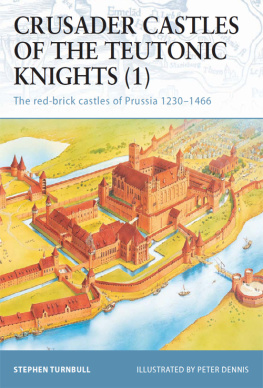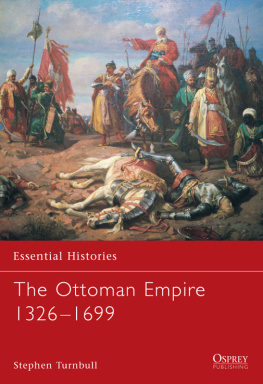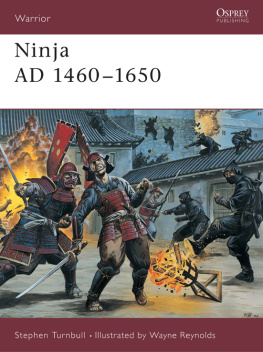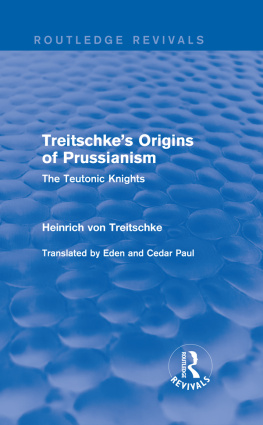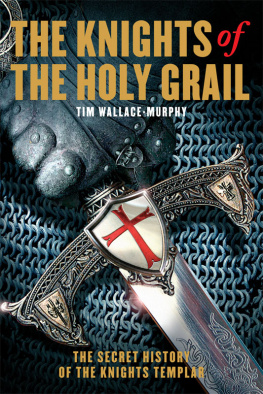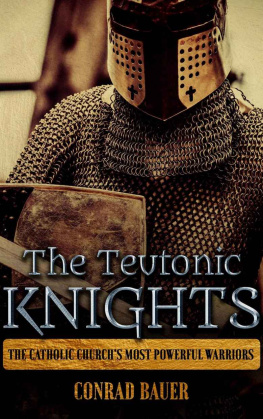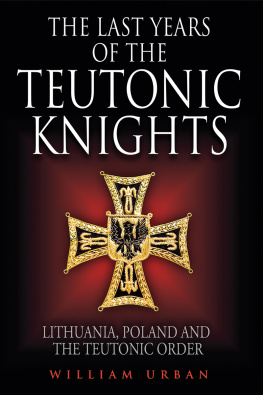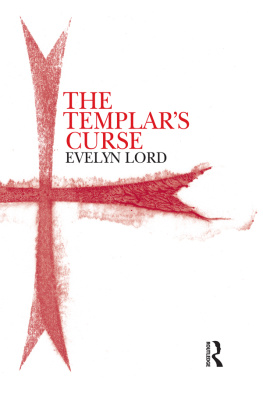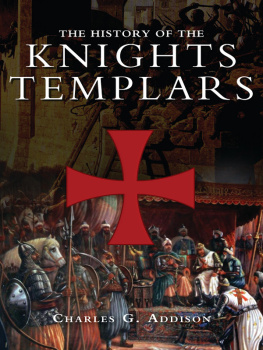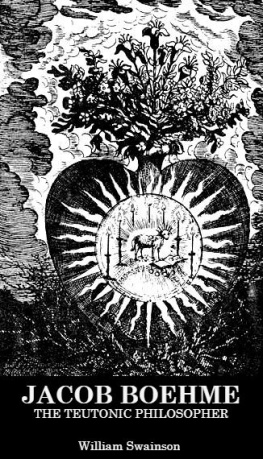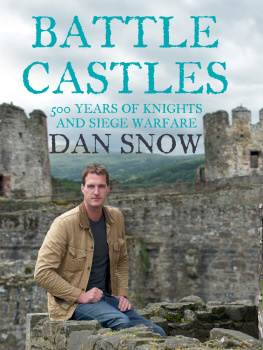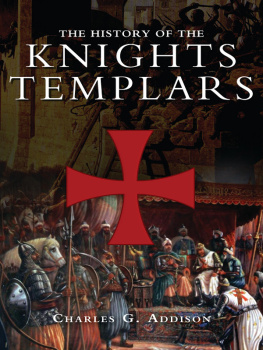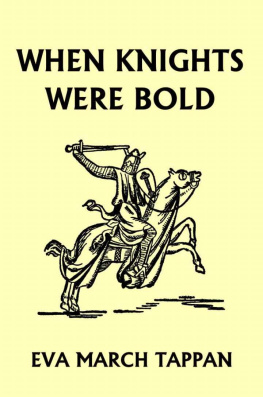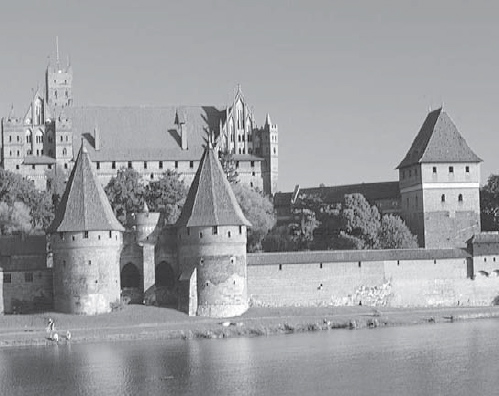FORTRESS 11
CRUSADER CASTLES OF THE TEUTONIC KNIGHTS (1)
The red-brick castles of Prussia 12301466
| STEPHEN TURNBULL | ILLUSTRATED BY PETER DENNIS |
| Series editors Marcus Cowper and Nikolai Bogdanovic |
Contents
The development of the crusader castles
The castle builders of the Teutonic Order
By the end of the 12th century the extraordinary adventure that we know as the Crusades had been in operation for 100 years. The crusaders had suffered many disappointments, and the spiritual idealism that had created and sustained orders of knighthood such as the Templars and the Hospitallers seemed to be on the wane. Yet at precisely that point in time a new order of spiritual knighthood appeared. The inspiration came neither from the clergy nor the army, but from a group of German merchants of Bremen and Lbeck, two cities of the Hanseatic League. The merchants had been active in the Holy Land and took pity on their fellow countrymen who had been afflicted by disease or wounds during the siege of Acre. They therefore built a makeshift hospital that consisted of no more than large tents roofed from the sails of their ships, but their leader obtained a pledge of a donation of land in Acre once the city had been conquered.
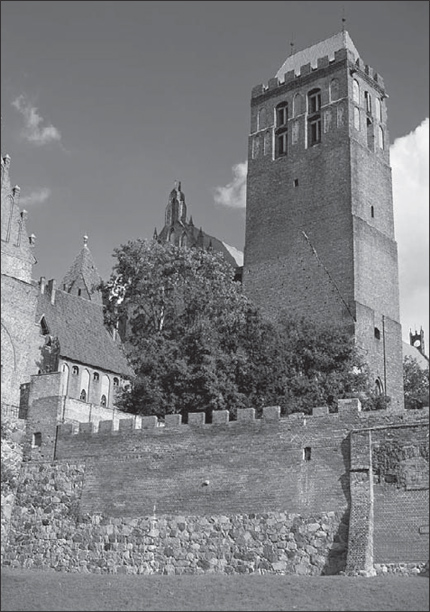
The main tower and belfry of the castle of Marienwerder (Kwidzyn) is one of the most important surviving monuments from the times of the Teutonic Knights. It was originally founded in 1232 as a timber castle, and rebuilt on a grand scale in red brick.
When Acre fell a hospital and dormitories were built on the designated plot of land and its leaders applied to the Pope for recognition as a spiritual corporation. This was granted by Pope Celestine III in 1196 and confirmed by Pope Innocent in 1199, the latter insisting that the corporation should become a knightly order, taking its knightly rules from the Templars and its hospital rules from the Hospitallers. Thus was created the Servants of St Mary of the German House, better known as the Teutonic Knights.
The new order of German knights never distinguished itself in battle in the Holy Land, nor did it enjoy the fabulous wealth that was to prove the ruin of other orders. Even though a few members from other lands joined its ranks, the Teutonic Order remained a purely Germanic movement, and one of its most important features was its close association with the German burghers. As we shall see, this was particularly strong in the context of its activities in Prussia, where the development of castles and towns and participation in trade were vital characteristics of the Orders work.
Castles and frontiers
The development of the crusader castles of the Teutonic Knights matched exactly the expansion of the Orders Prussian territories. As the frontier advanced so did the line of forts that defended it, and as time went by and newly conquered lands became permanent possessions, so temporary forts gave way to permanent castles.
There are three phases to the developmental history of the Orders crusader castles. The first lasted from about 1230 to 1283, the time of the conquest of Prussia, and saw the building of the first wooden forts and their replacement by the brick structures seen today. During this period the castles were used both defensively and offensively against the pagan Prussians. The second phase began with the start of the Lithuanian crusade in 1283, when the castles provided the bases for a further advance by the Teutonic Knights into pagan lands. The third phase began when the crowns of Poland and Lithuania were united in 1386 and the Orders Prussian castles began to come under serious attack from their Christian neighbours. This culminated in a series of invasions of Prussia during the 15th century, the first of which produced the famous battle of Tannenberg (Grunwald) in 1410. The war concluded with the Second Treaty of Torun in 1466, which handed over all the castles to Poland.
The Prussian crusade
The conversion of pagan Prussia, of which the crusader castles of the Teutonic Knights were a weapon and remain as a memorial, was carried out using the stick and carrot approach of mission and warfare from the year 1230 onwards. The Order was first invited into Prussia at the request of a Polish dignitary, but it always needed the help of allies from the Hanseatic League, Polish knights, Papal legates and German colonists to do its job properly. The Order also displayed considerable diplomatic skills to avoid having to share the sovereignty of the lands that they conquered. This land, on which the castles were built, was jealously guarded as the property of the Teutonic Order, who owed allegiance directly to the Pope and to no one else.
When the Prussian crusade began at the beginning of the 13th century Prussia was inhabited by a number of pagan tribes. They had no organised state system and were ruled by lords who cherished their independence from both their Christian neighbours and each other. Their small territories bore such exotic names as Pogesania, Nattangia and Warmia. The Prussians farmed and hunted, sometimes raiding across their ill-defined borders and at other times trading with foreign merchants through the Vistula (Wisla) delta. Theirs was a wild land of swamps and forests stretching from the Baltic Sea in the north to the borders of Poland in the south and west and the Lithuanian forests to the east. Attempts had been made in the past to colonise and Christianise the Prussians, but until the Teutonic Order arrived on the scene they had stubbornly resisted all attempts to conquer and convert them.
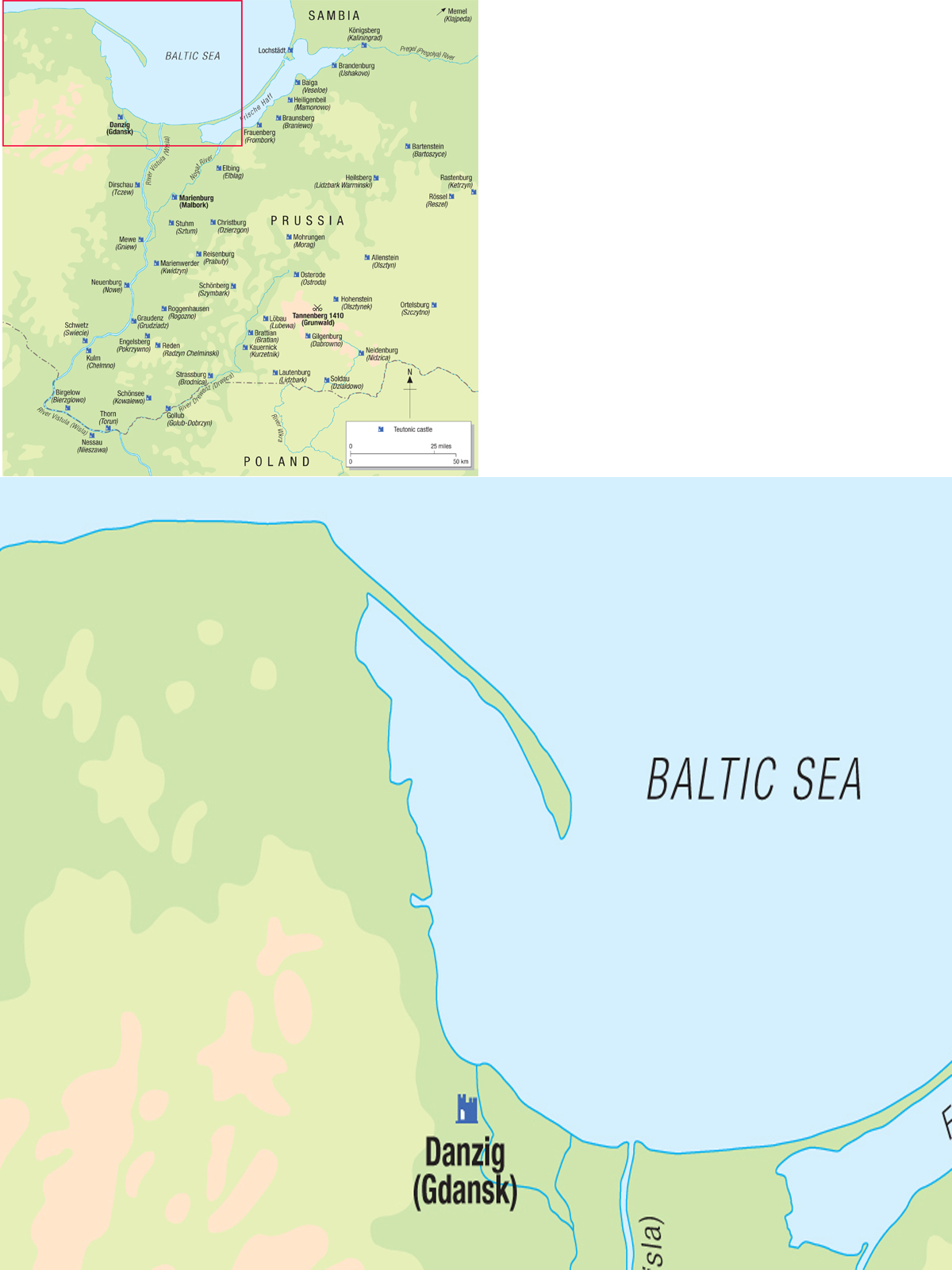
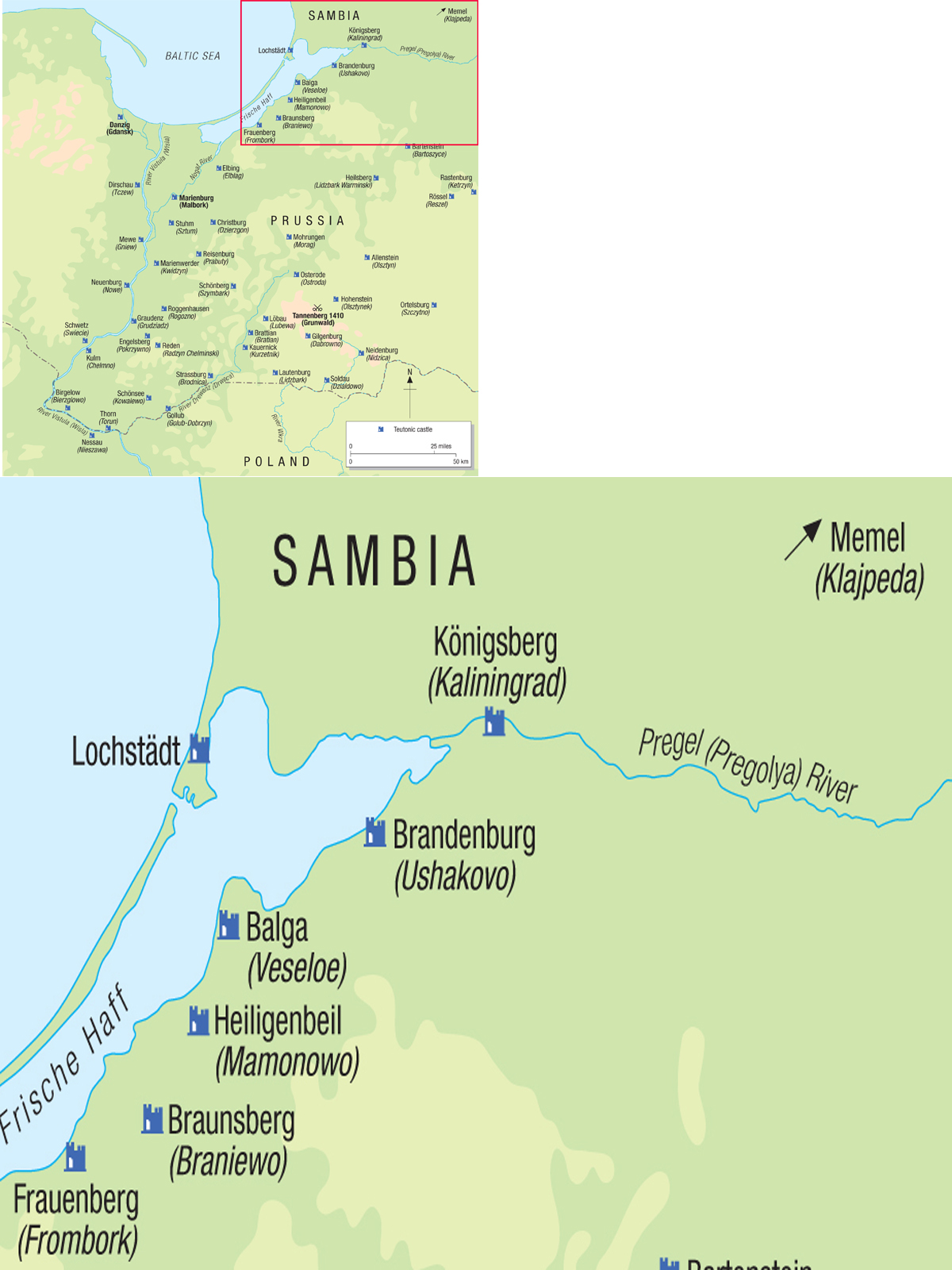
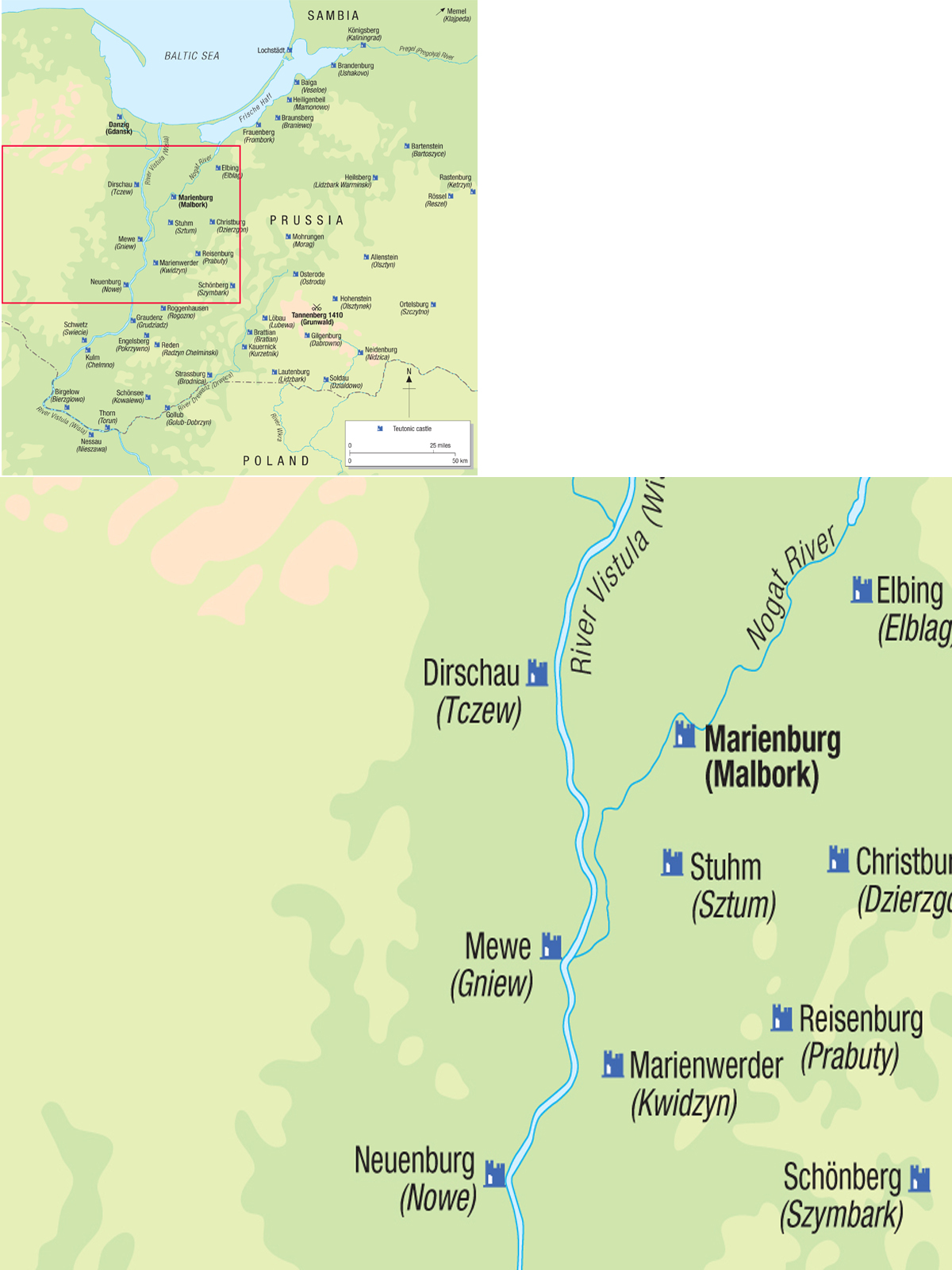
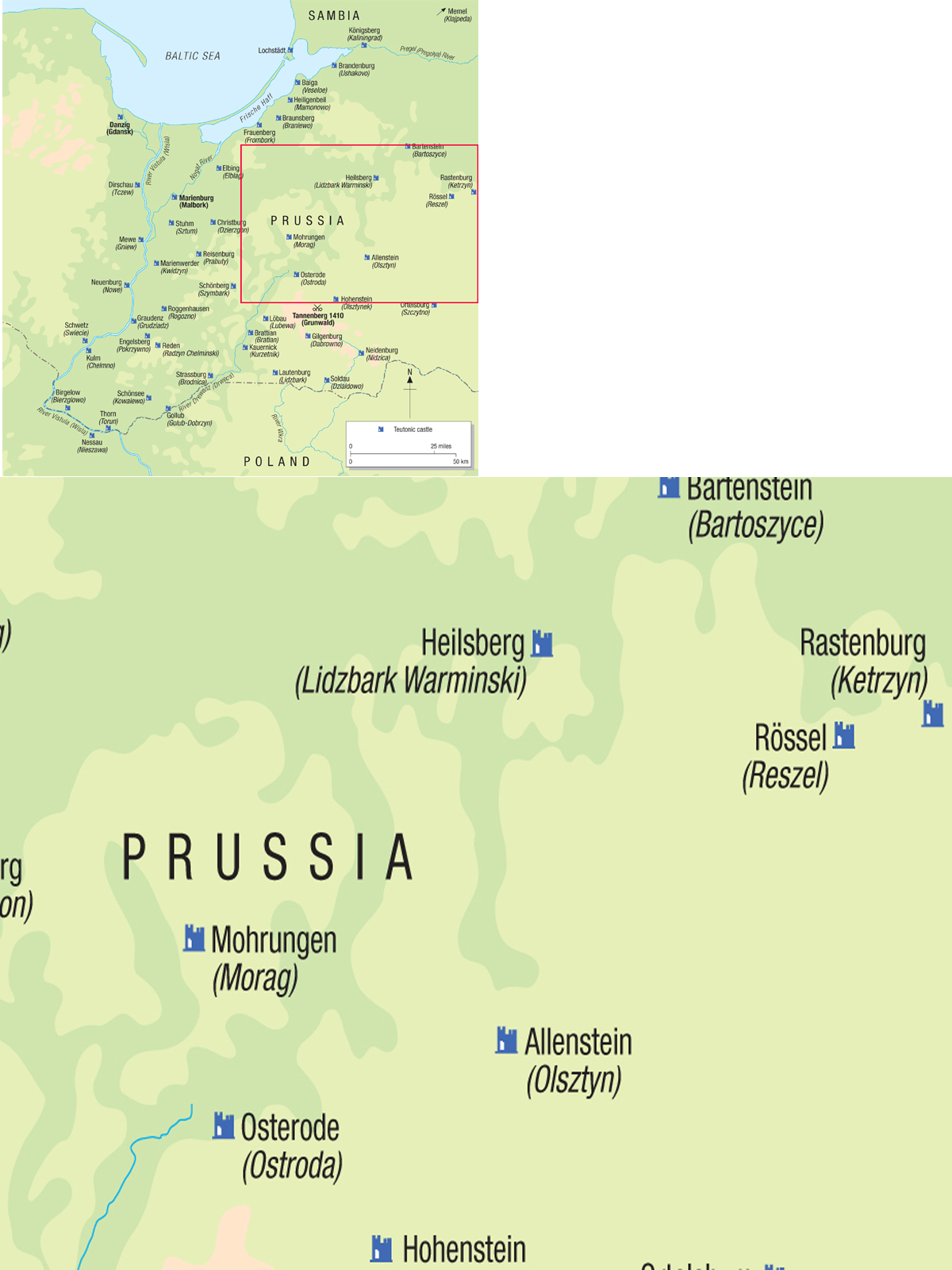
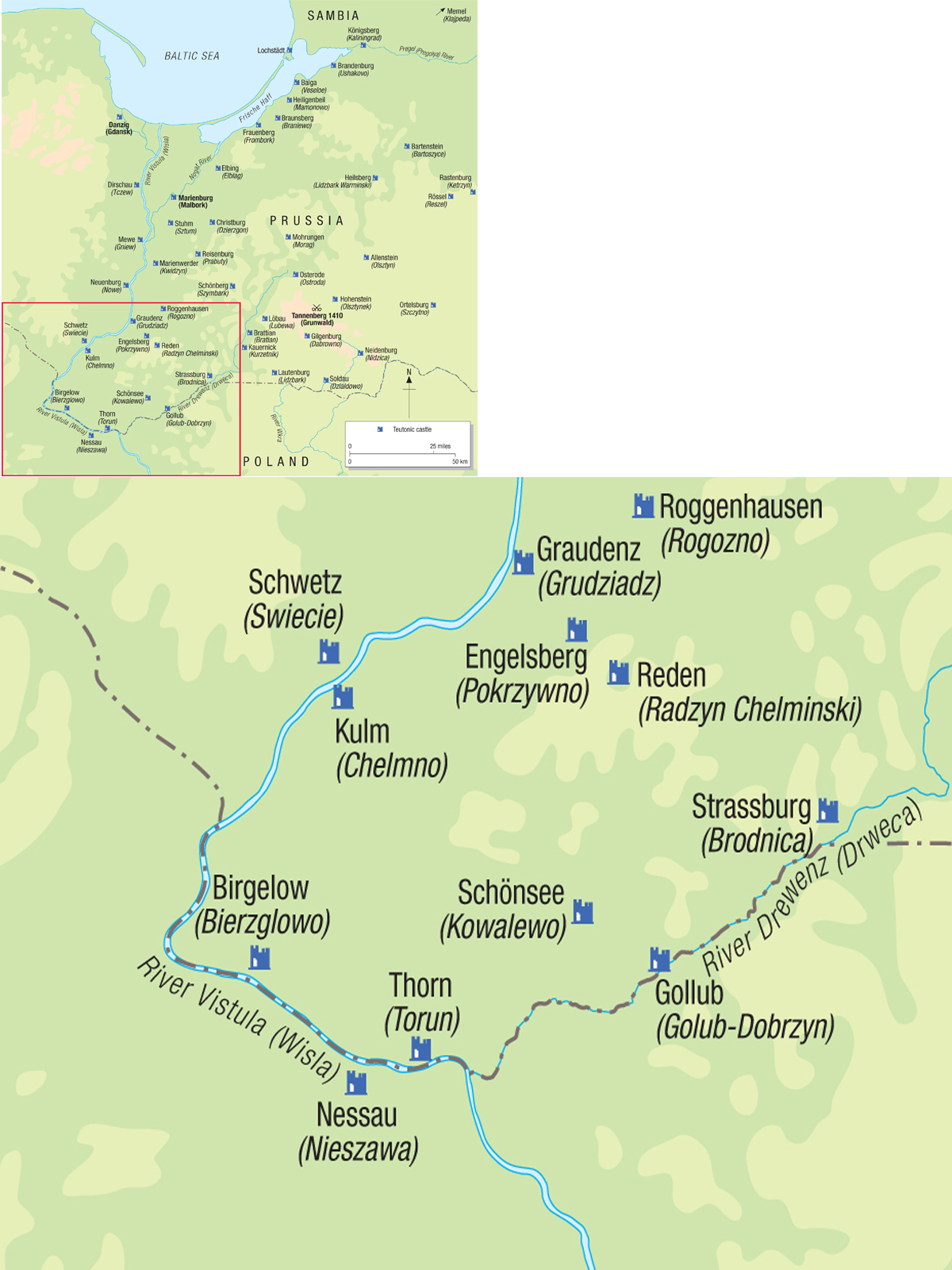

Map showing the location of the most important crusader castles of the Teutonic Knights in Prussia. ( Osprey Publishing Limited)
A valuable lesson was learned in 1223. A motley crew of German and Polish crusaders gathered for a raid against the Prussians near Kulm (Chelmno). This provoked a fierce counterattack by the pagans and the there were many casualties on the crusader side. As a result of this debacle Duke Conrad of Masovia, a Polish nobleman, invited the Teutonic Order into Poland to help in the noble endeavour. In return for their services the Order would be granted the territory of Chelmno and any further lands they conquered in the course of the operation. The current Grand Master, Hermann von Salza, immediately recognised the opportunity that had come his way. With the support of Emperor Frederick II, in 1226 the Pope granted the Golden Bull of Rimini which set out in minute detail the constitution of the future state that the Order already intended to win for itself.
Next page
